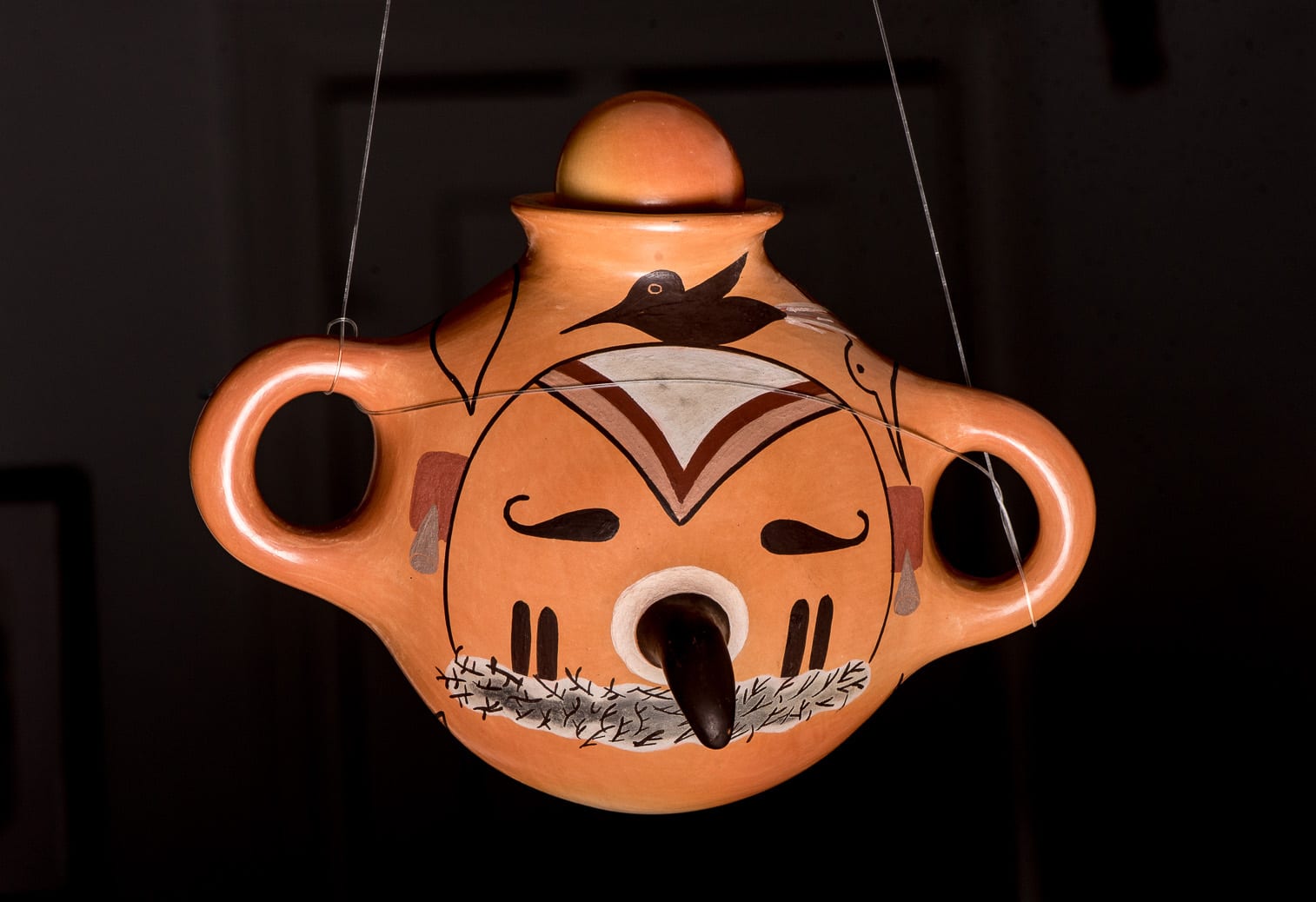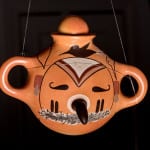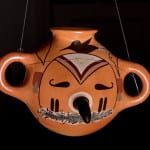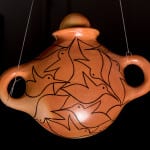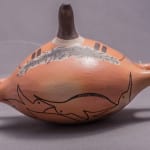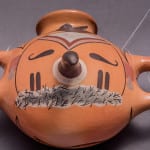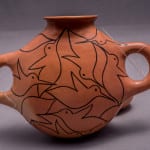The height includes 0.75” height of the stopper in the canteen.
The width includes two 1.25” handles,
The depth (front to back) measurement includes the 1” nose.
Both prehistoric and historic canteens with hooked noses are known. See the cover of Dittert and Plog (1980: cover and p. 111) for a Sikyatki example. A similar canteen by Nampeyo was for sale by Steve Elmore, picture on file. However Mark has taken this concept and enlarged on it, adding
a) a rounded back, b) a flared spout and c) a loosely fitting stopper. The canteen is nicely blushed from its outdoor firing.
While earlier renditions of this form depicted an avian being, Mark has conceptualized a different and more complex image. The front of the canteen is a katchina, its forehead painted with overlapping blue, red and tan triangles, tadpole-like eyes, the hooked beak its nose or mouth with a ruff of evergreens around its neck. Turquoise graces its ears. “On its cheeks are the dual vertical stripes that signify the twin warrior gods, a male identifier (Wade and Cooke, 2012:107).” I suspect this represents a specific katchina, but have not identified it yet.
Gracing the rear of the canteen is a swirling flock of eleven birds drawn in black outline; only fragments of these images are visible from the front of the vessel. A twelfth bird painted in solid black with a fan of tan and white tail feathers sits upon the katchina face on the front. Katchinas and birds, of course, are natural soulmates.
The overall effect of canteen 2014-12 is complex: fun, beautiful, intriguing and sacred, much like the katchina daces it echoes.

